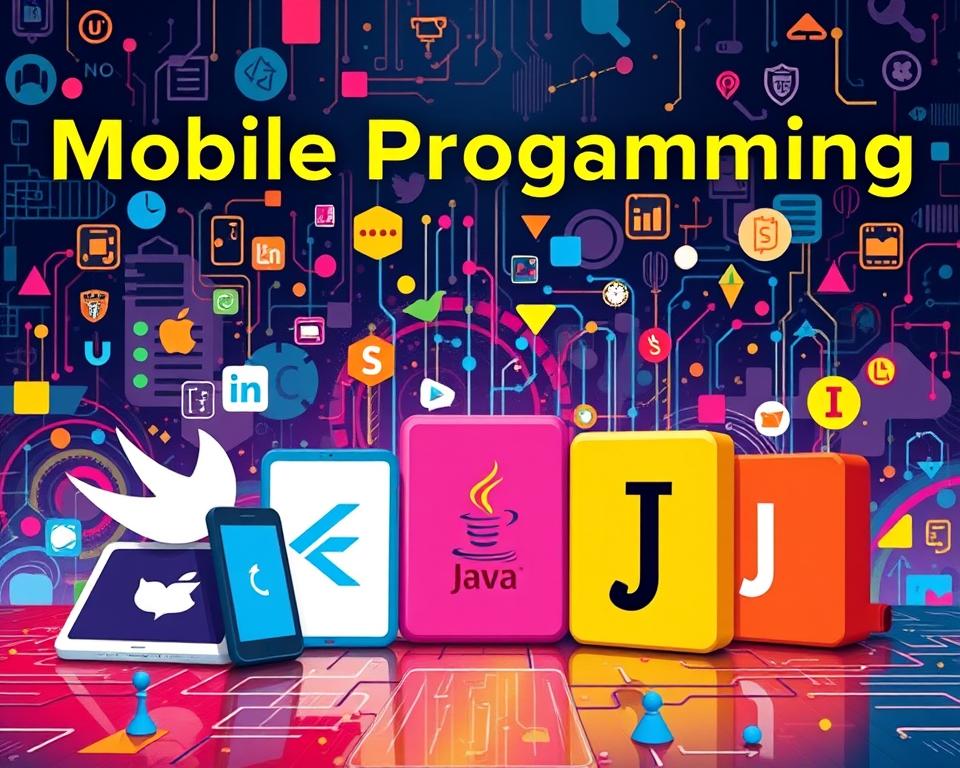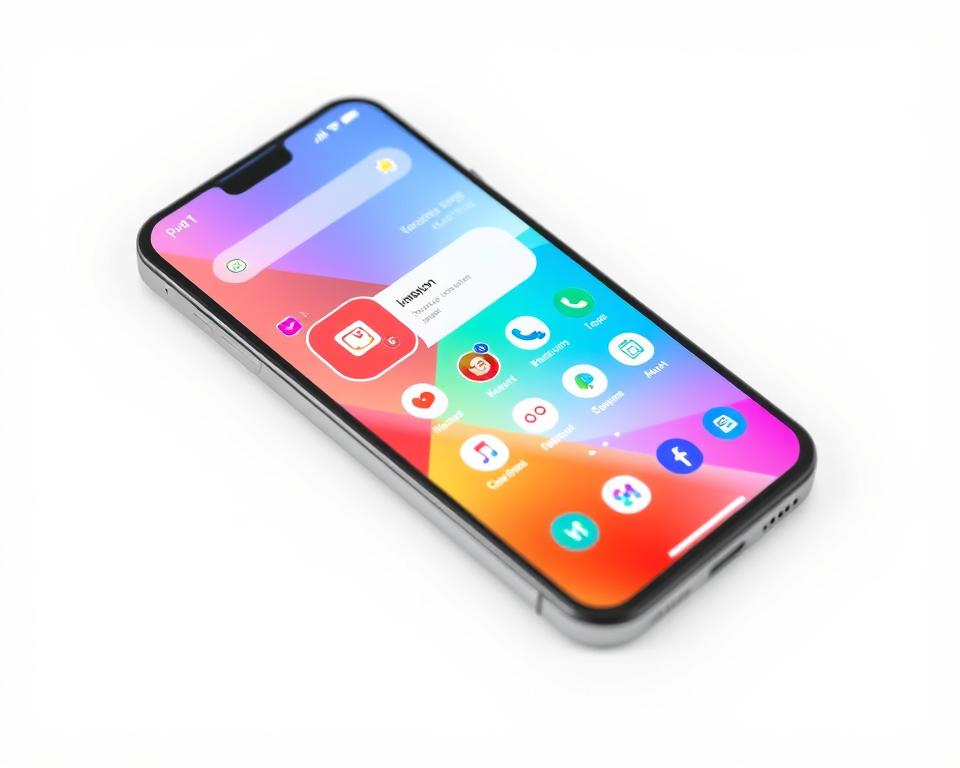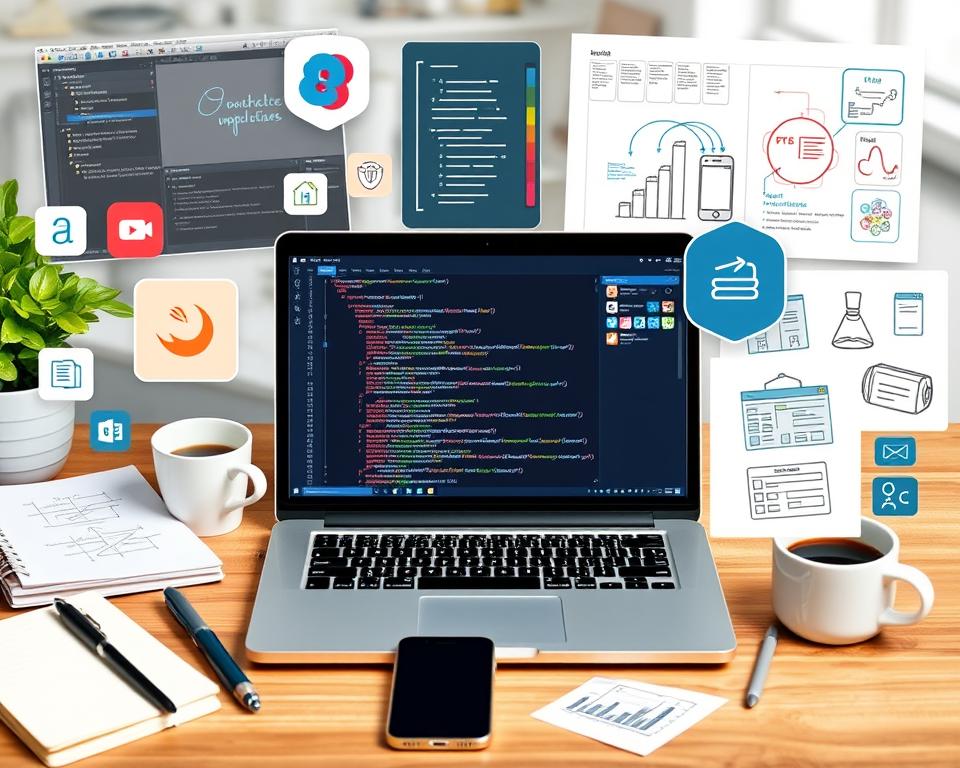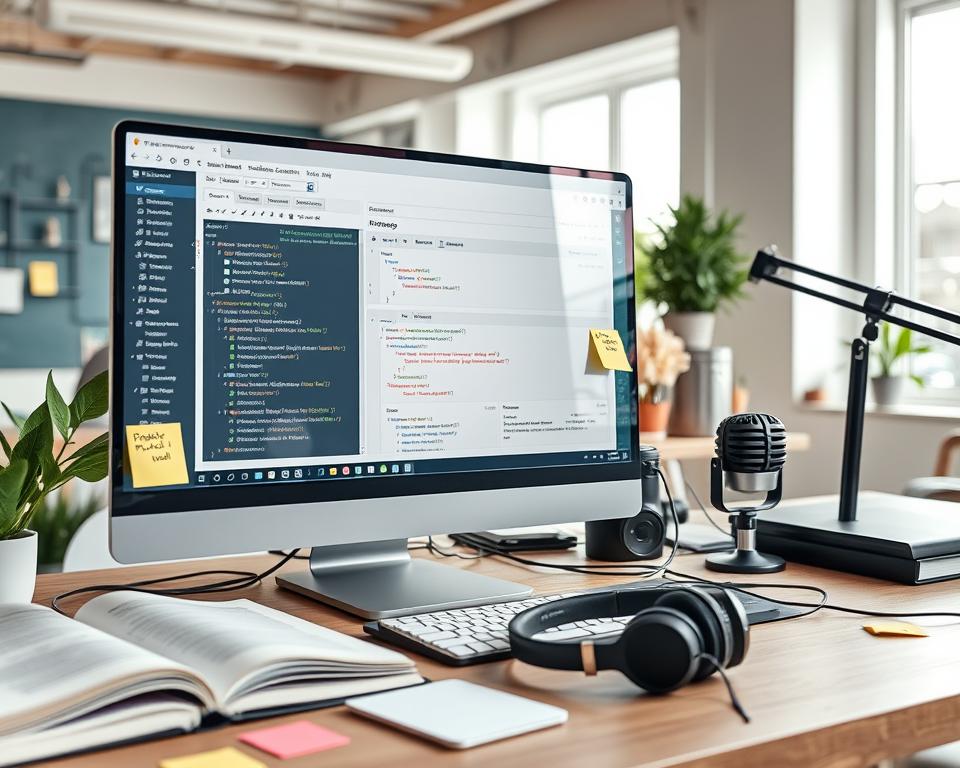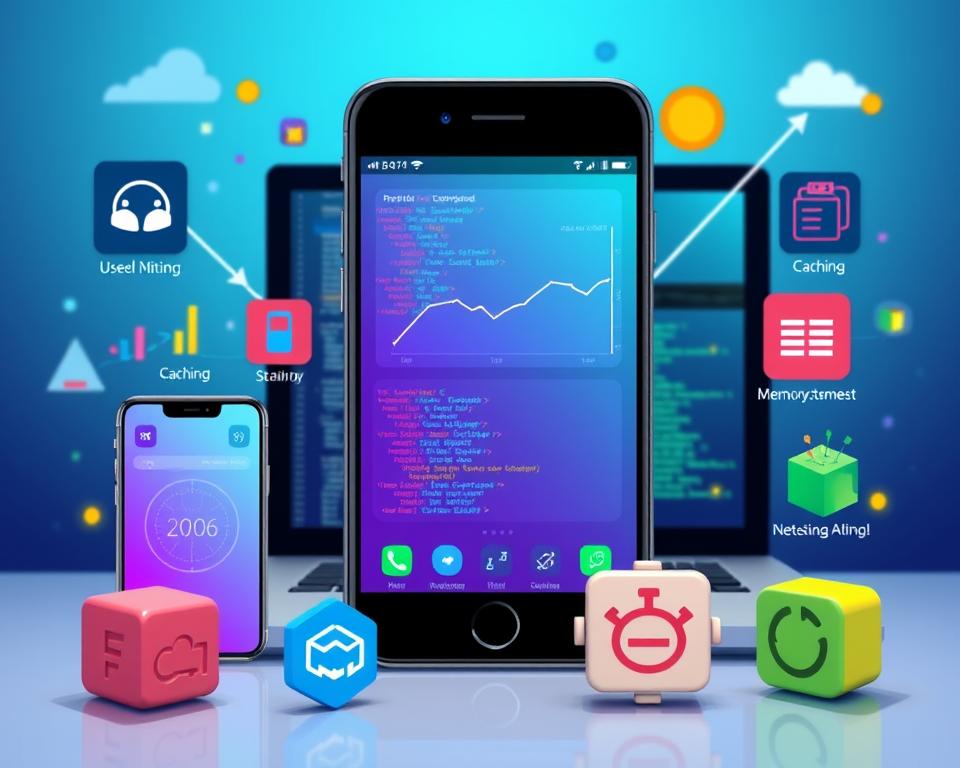In today’s fast-paced mobile world, mobile app developers play a key role. They turn new ideas into apps that meet users’ needs. To succeed, they need a wide range of skills, both technical and non-technical.
At the heart of a developer’s skills is a solid grasp of mobile development basics. This includes knowing the latest programming languages and understanding app architecture. They also need to know how to design a great user experience and work with backend systems and APIs.
Moreover, they must be familiar with the app ecosystem. This includes security and how to deploy apps. This knowledge helps them create apps that are both safe and easy to use.
Table of Contents
Key Takeaways
- Mobile app developers must have a strong grasp of mobile development fundamentals, including programming languages, architecture patterns, and the development lifecycle.
- Proficiency in UI/UX design principles is crucial for creating intuitive and user-friendly mobile applications.
- Backend development and API integration skills are essential for building robust and scalable mobile apps.
- Soft skills, such as problem-solving, collaboration, and adaptability, are just as important as technical competencies in the mobile app development field.
- Understanding industry-specific knowledge, such as app store guidelines and deployment processes, can give mobile app developers a competitive edge.
Understanding Mobile Development Fundamentals
Mobile app development is fast-paced and complex. It requires a solid grasp of key concepts and principles. The choice between native and cross-platform development is central to this field. Each method has its own strengths and challenges.
Native vs Cross-Platform Development
Native apps are made for one platform, like iOS or Android. They use specific programming languages and tools. This method ensures top performance and a smooth user experience. Yet, it means developers must write separate code for each platform, increasing time and costs.
On the other hand, cross-platform frameworks like React Native and Flutter allow apps to run on multiple platforms from a single codebase. This reduces development time and costs, appealing to startups and small businesses. However, cross-platform apps might not offer the same performance and user experience as native apps.
Mobile Architecture Patterns
Mobile app architecture is vital for an app’s structure and growth. Patterns like Model-View-Controller (MVC), Model-View-Presenter (MVP), and Model-View-ViewModel (MVVM) are common. Each pattern has its own advantages and drawbacks, depending on the app’s needs and complexity.
Development Lifecycle Management
Mobile development follows a structured lifecycle: planning, design, development, testing, and deployment. Knowing each stage and the tools involved is key to creating high-quality apps. These apps must meet user needs and business objectives.
By understanding mobile development basics, including native vs. cross-platform, architecture patterns, and the development lifecycle, developers can craft strong, scalable, and user-friendly apps. These apps can succeed in the competitive mobile market.
Programming Languages Every Mobile Developer Must Master
In the world of mobile app development, knowing programming languages is key. These languages are the base for making new apps. Learning them well is vital for success.
Swift is Apple’s language for iOS apps. Kotlin is big in Android, known for its clean code. Both are great for making fast, easy-to-use apps.
JavaScript is popular for apps that work on many systems. It’s used with frameworks like React Native. This makes app development faster and cheaper.
| Programming Language | Primary Use Case | Key Advantages |
|---|---|---|
| Swift | iOS app development | Efficiency, readability, performance |
| Kotlin | Android app development | Concise syntax, interoperability with Java |
| JavaScript | Cross-platform development | Versatility, large ecosystem, cost-effective |
Learning these languages and their tools helps developers make top apps. This meets the changing needs of the market.
UI/UX Design Principles for Mobile Applications
In today’s world, the design of mobile apps is key to their success. Mobile UI/UX design combines a focus on mobile, thoughtful design, and responsive design. It’s all about making apps easy to use and fun to interact with.
Mobile-First Design Approach
Starting with a mobile-first design approach is vital today. It means designing for the smallest screen first. This ensures apps work well on mobile devices, offering a smooth experience.
User Interface Components
Good user interface components are the heart of a great app. These include menus, buttons, and visual elements. Designers must think about how these fit together to make the app easy to use.
Responsive Design Techniques
Using responsive design techniques is essential for a good user experience. It means designing elements that work well on all devices. This way, apps look and work great on any screen.
By following these design principles, developers can make apps that are engaging and easy to use. This leads to happy users and success for the app.
Backend Development and API Integration Skills
As a mobile app developer, it’s key to know backend development and API integration. These skills help make apps strong and work well. They cover server-side programming, database management, and how the app talks to the server.
Server-side programming is a must. It means creating the server logic, handling requests, and managing data. Knowing Node.js, Python, or Java is very helpful for this part of app making.
API integration is also very important. APIs connect the app to the server, letting them share data and functions. Developers need to know about RESTful APIs, JSON, and how to keep data safe.
Database management is also key. It’s about keeping data safe and easy to find, whether it’s on the device or on a server. Knowing how to set up databases and make data easy to find is crucial.
| Skill | Description | Key Tools and Technologies |
|---|---|---|
| Server-side Programming | Developing the server-side logic and handling client requests | Node.js, Python, Java |
| API Integration | Enabling seamless communication between the app and the server | RESTful APIs, JSON, Authentication Protocols |
| Database Management | Efficient data storage, retrieval, and optimization | SQL, NoSQL, ORM frameworks |
By getting good at backend development and API integration, app developers can make apps that work great. These apps will also work well with the server, making the app a success and easy to grow.
What Type of Skill is Needed of Mobile App Developer
In the world of mobile app development, success comes from a mix of technical skills, soft skills, and industry knowledge. These skills are key for developers to excel in the fast-changing digital world.
Technical Competencies
Developers need to know programming languages like Java, Swift, or Kotlin to make native apps. Knowing cross-platform tools, such as React Native or Flutter, helps apps work on different systems. Skills in app architecture, backend work, and API management are also vital.
Soft Skills Requirements
- Effective communication: Working well with designers, product managers, and others to turn business ideas into apps.
- Problem-solving: Good at finding and fixing complex problems during app development.
- Adaptability: Ready to learn new tech and adapt to industry changes.
- Attention to detail: Careful to ensure high-quality code and perfect user interfaces.
Industry-Specific Knowledge
Top developers keep up with the latest trends, best practices, and what users want. They know about different mobile devices, operating systems, and their challenges. Knowing app store rules, how to submit apps, and marketing strategies helps apps succeed.
| Skill Category | Importance |
|---|---|
| Technical Competencies | High |
| Soft Skills | High |
| Industry-Specific Knowledge | Medium |
By mastering these skills, developers can make apps that are innovative and user-friendly. These apps can do well in the fast-paced mobile world.
Version Control and Collaboration Tools
In the fast-paced world of mobile app development, Git and other version control systems are key. They help manage code and make team work easier. These tools let developers track changes, merge code, and work together, no matter where they are.
Knowing how to use version control is crucial for mobile app developers. Git helps keep code clean, solve problems, and keep track of changes. This is vital for big projects where many people work on the same code.
Developers also need to know how to use collaboration tools. Platforms like GitHub, Bitbucket, and GitLab are great for managing code and talking to the team. They make it easier for teams to work together, be more productive, and develop apps smoothly.
“Effective version control and collaboration are the cornerstones of any successful mobile app development project.”
As the mobile app world keeps changing, knowing Git and other tools will become even more important. By learning these skills, developers can make their work easier, improve their code, and create apps that meet market needs.
Mobile App Security and Authentication
In today’s world, mobile apps are a big part of our lives. Keeping user data safe is very important. This section talks about mobile app security, including data encryption methods, security best practices, and authentication protocols.
Data Encryption Methods
Keeping user data safe is a top priority for app developers. Data encryption makes data unreadable to hackers. Developers need to know about encryption algorithms like AES, RSA, and SHA to protect data well.
Security Best Practices
- Follow secure coding practices to avoid bugs and attacks.
- Use secure communication channels to keep data safe from hackers.
- Keep the app and libraries up to date to fix security issues.
- Do security testing often to find and fix problems.
Authentication Protocols
Good authentication protocols make sure only the right people can use an app. Developers should know about biometric authentication, two-factor authentication, and OAuth 2.0. These methods help keep user data safe.
| Security Measure | Description |
|---|---|
| Data Encryption | Transforming data into a coded format to prevent unauthorized access. |
| Secure Coding Practices | Implementing techniques to minimize vulnerabilities and potential attacks. |
| Authentication Protocols | Verifying user identity to grant secure access to the mobile app. |
“Making mobile app security a priority is essential today. Developers who focus on data encryption, secure coding, and authentication can create reliable mobile apps.”
By focusing on these key areas of mobile app security, developers can make apps that are safe and trustworthy. This builds user confidence and keeps their data protected.
Performance Optimization Techniques
Ensuring your mobile app performs well is key for a great user experience. We’ll look at app performance optimization methods to make your apps faster and more efficient.
Code Optimization
Optimizing code is vital for mobile app efficiency. It means finding and fixing slow parts, cutting down on extra work, and following best practices. These steps can greatly boost your app’s speed and how it uses resources.
Efficient Resource Management
Good resource management is also crucial. It’s about how your app uses things like memory, battery, and internet. Using techniques like memory management and network optimization can make your app work well on many devices.
Best Practices for Cross-Device Performance
It’s important to make sure your app works well on all devices. By using best practices for cross-device performance, like responsive design, you can give users a smooth experience no matter their device.
“Optimizing mobile app performance is not just about making it faster, but about creating a truly exceptional user experience that keeps users engaged and coming back.”
By learning these performance optimization techniques, developers can make apps that are fast, efficient, and enjoyable. This leads to a better user experience and success in the mobile app market.
Cross-Platform Development Tools
In the fast-paced world of mobile app development, making apps that work on many platforms is key. Cross-platform development tools are changing how developers work. Tools like React Native, Flutter, and Xamarin bring many benefits to mobile app making.
Popular Frameworks
Three top frameworks stand out in cross-platform development:
- React Native – Made by Facebook, it lets developers make apps for iOS and Android using JavaScript.
- Flutter – Backed by Google, it’s an open-source framework that uses Dart. It makes apps look great and run smoothly.
- Xamarin – From Microsoft, it uses .NET and C# to build apps for many platforms with one codebase.
Development Environments
Developers also have many development environments to choose from. These include Android Studio, Xcode, and Visual Studio. They offer tools, debugging, and ways to deploy apps, making development easier.
Using these tools and frameworks, developers can make top-notch apps. These apps work on many devices and meet different user needs. This way, developers can reach more people and give them great experiences.
Testing and Quality Assurance
In the world of mobile app development, quality and reliability are key. Testing and quality assurance (QA) are crucial for a great user experience. These practices find and fix issues before your app reaches users.
Testing covers many areas, like functional, usability, and performance testing. It checks for bugs and how well the app works. Automated tools help make testing faster and more reliable.
User acceptance testing (UAT) is also important. Real users test the app and give feedback. This feedback helps make the app better and meet user needs.
Focus on mobile app testing and quality assurance to make a top app. Use the right tools and processes to create a great mobile experience.
App Store Deployment and Publishing
As a mobile app developer, getting your app on the market is key. This part covers the important steps for major app stores. It helps you launch your app and connect with your audience.
App Store Guidelines
Each big app store, like Apple’s App Store and Google Play Store, has its own rules. These rules cover tech specs, design, content, and more. Knowing these rules is the first step to publishing your app.
Submission Process
The app submission process might look tough, but it’s doable with the right prep. Here are the main steps:
- Make sure your app fits the platform’s rules and tech needs
- Write a detailed app description with screenshots and promo materials
- Send your app for review by the store’s team
- Fix any feedback or issues from the review
- Finalize your app listing and make it public
By following these steps and guidelines, you boost your app’s approval chances. This means more people can find and use your app, helping you meet your goals.
| App Store | Key Guidelines | Submission Process |
|---|---|---|
| Apple App Store |
|
|
| Google Play Store |
|
|
Knowing the app store guidelines and the submission process helps. It makes sure your app store deployment and app publishing go smoothly.
Analytics and User Behavior Tracking
In the fast-paced world of mobile app development, mobile app analytics and tracking user behavior are key. They help make decisions based on data. By watching app usage metrics and user behavior, developers can learn a lot. This knowledge helps improve apps and make users happier.
Mobile app analytics lets developers see how users engage with their app. They can find out which features are most loved and where problems might be. This info helps developers make the app better, easier to use, and more fun.
User behavior tracking also helps developers understand their audience better. By looking at user demographics and what they do in the app, developers can make their app more appealing. This approach leads to better products, marketing, and more users.
| Key Metrics for Mobile App Analytics | Description |
|---|---|
| Daily Active Users (DAU) | The number of unique users who launch the app each day |
| Monthly Active Users (MAU) | The number of unique users who launch the app each month |
| Session Length | The average time a user spends in the app per session |
| Churn Rate | The percentage of users who stop using the app over a given period |
| Conversion Rate | The percentage of users who complete a specific in-app action or goal |
By using mobile app analytics and user behavior tracking, developers can make smart choices. These choices improve the app, make users happier, and help the business grow. This data-driven development is crucial for success in the mobile app world.
Conclusion
In today’s fast-changing world of mobile app development, having the right skills is key. You need to know programming languages and UI/UX design. Keeping up with trends and user needs is essential.
Mobile app development skills go beyond just coding. They include backend work, security, and making apps run smoothly. Developers must always learn new things to stay ahead.
The mobile app market is always changing. There’s a growing need for experts who can handle many things. By improving their skills and being open to change, developers can thrive in this field.









